Thingiverse
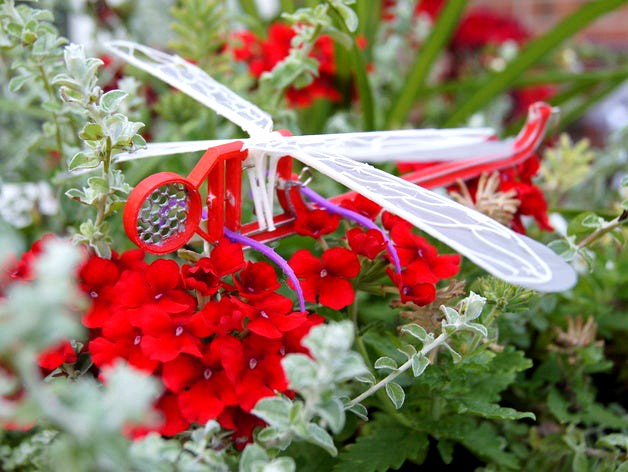
Dragonfly Science by thinkpool
by Thingiverse
Last crawled date: 3 years ago
We have completed the prototype of a mechanical radio control dragonfly and we are collecting funds to bring it to market. The KickStarter will allow you to purchase the Dragonfly RC or you can invest in our company GadgetANNI. Details on how you can own a part of GadgetANNI will be posted shortly. If you have questions please message me through your Thingiverse account.
Thank you
One of the most fascinating creatures on Earth, the dragonfly has a very ancient stroke. It's an up-and-down stroke instead of a back-and-forth stroke. An airfoil uses aerodynamic lift to carry its weight. But the dragonfly uses a lot of aerodynamic drag to carry its weight. What’s odd is that with airplanes you always think about minimizing drag, you never think about using drag for lift.
The physics of dragonfly flight inspired me to build a mechanical dragonfly based on scientific research by Z. Jane Wang, professor of theoretical and applied mechanics at Cornell University, and Akira Azuma research papers. This design utilizes drag to create flight by using theoretical models including momentum theory and the blade element theory.
The inspiration for this mechanical insect originated from many of the fantasized gadgets of Leonardo da Vinci and other mechanical creations once thought futuristic in times long before our own.
The wings
The design of the wings were crucial to figure out how to use drag to create flight.
Dragonflies are insects belonging to the order Odonata, which wings move independently during flight. As the forewing lifts, the hindwing lowers.
They have two pairs of similarly sized long thin membranous wings.
Its fore and hind wings are controlled by separate muscles, and a distinctive feature of the dragonfly’s wing movement is the phase relation between those wings during various maneuvers. Creating oscillating wings at a specific distance apart develops whirls on top of opposing wings which creates lift.
Wings had to be close enough for them to interact hydrodynamically.
The engine
The engine that flaps the wings is driven by a twisted rubber band that turns a crank shaft. Mimicking natures design while maintaining a simple design was testing so we defaulted to a proven design. The reason for this decision was influenced by the nature of how a dragonfly uses its muscle.
A dragonfly's muscles flap its wings by flowing blood in its veins which manifest Coriolis forces.
When muscles attached to the dorsal surface of the thorax contract, they pull down on the tergum. As the tergum moves, it draws the wing bases down, and the wings, in turn, lift up. Another set of muscles, which runs horizontally from the front to the back of the thorax, then contract. The thorax again changes shape, the tergum rises, and the wings are drawn down.
Dragonflies perform at low speed flight with ordinary airfoil characteristics, instead of adopting an abnormally large lift coefficient.
Wing movement
The flapping rate of the wings maintain the forces that keep the dragonfly air born. We compromised the wing speed from 30 beats per second to 2 beats per second and added a gliding feature to the design. Dragonflies are also good gliders. Some larger species can glide for 20 m at angle of 10 degrees.
Dragonflies flap and pitch their wings at a rate of about 40 Hz. The blood flowing in veins induces Coriolis forces in the flapping wings.
The body design
When art and science do merge, the result often becomes an elaboration on scientific data through a more artistic medium. The most sturdy and elegant design for the body was to use a "X" shape along the tail and underbelly. The sturdiness of the design allows for greater pressure from the twisting of the rubber band.
https://youtu.be/r8CszYNxGHg
Thank you
One of the most fascinating creatures on Earth, the dragonfly has a very ancient stroke. It's an up-and-down stroke instead of a back-and-forth stroke. An airfoil uses aerodynamic lift to carry its weight. But the dragonfly uses a lot of aerodynamic drag to carry its weight. What’s odd is that with airplanes you always think about minimizing drag, you never think about using drag for lift.
The physics of dragonfly flight inspired me to build a mechanical dragonfly based on scientific research by Z. Jane Wang, professor of theoretical and applied mechanics at Cornell University, and Akira Azuma research papers. This design utilizes drag to create flight by using theoretical models including momentum theory and the blade element theory.
The inspiration for this mechanical insect originated from many of the fantasized gadgets of Leonardo da Vinci and other mechanical creations once thought futuristic in times long before our own.
The wings
The design of the wings were crucial to figure out how to use drag to create flight.
Dragonflies are insects belonging to the order Odonata, which wings move independently during flight. As the forewing lifts, the hindwing lowers.
They have two pairs of similarly sized long thin membranous wings.
Its fore and hind wings are controlled by separate muscles, and a distinctive feature of the dragonfly’s wing movement is the phase relation between those wings during various maneuvers. Creating oscillating wings at a specific distance apart develops whirls on top of opposing wings which creates lift.
Wings had to be close enough for them to interact hydrodynamically.
The engine
The engine that flaps the wings is driven by a twisted rubber band that turns a crank shaft. Mimicking natures design while maintaining a simple design was testing so we defaulted to a proven design. The reason for this decision was influenced by the nature of how a dragonfly uses its muscle.
A dragonfly's muscles flap its wings by flowing blood in its veins which manifest Coriolis forces.
When muscles attached to the dorsal surface of the thorax contract, they pull down on the tergum. As the tergum moves, it draws the wing bases down, and the wings, in turn, lift up. Another set of muscles, which runs horizontally from the front to the back of the thorax, then contract. The thorax again changes shape, the tergum rises, and the wings are drawn down.
Dragonflies perform at low speed flight with ordinary airfoil characteristics, instead of adopting an abnormally large lift coefficient.
Wing movement
The flapping rate of the wings maintain the forces that keep the dragonfly air born. We compromised the wing speed from 30 beats per second to 2 beats per second and added a gliding feature to the design. Dragonflies are also good gliders. Some larger species can glide for 20 m at angle of 10 degrees.
Dragonflies flap and pitch their wings at a rate of about 40 Hz. The blood flowing in veins induces Coriolis forces in the flapping wings.
The body design
When art and science do merge, the result often becomes an elaboration on scientific data through a more artistic medium. The most sturdy and elegant design for the body was to use a "X" shape along the tail and underbelly. The sturdiness of the design allows for greater pressure from the twisting of the rubber band.
https://youtu.be/r8CszYNxGHg
Similar models
grabcad
free

MECHANICAL BIRD Design | Flapping wing mechanism design
...ases its speed, which has the effect of also increasing lift to counteract its weight, allowing it to maintain height or to climb
cg_trader
$10

Bird Flapping Mechanism
...rces with the air. bird flapping mechanism mechanical robot nature flap birds robotics gear industrial machine industrial machine
grabcad
free

flapping wing mechanism
...flapping wing mechanism
grabcad
this flapping wing can folk the wing in up stroke to reduce negative lift
grabcad
free

helicopter rotor blade
...ses around the airfoil. an airfoil is any surface producing more lift than drag when passing through the air at a suitable angle.
grabcad
free

Wing - 23012 Aerofoil Section
...seous or liquid fluid. a wing is an airfoil, which has a streamlined cross-sectional shape producing a useful lift to drag ratio.
cg_trader
$3

mutilated wings 3D printing | 3D
...and submarines. wings wing feather flying angel bird nature art sculptures games toys games toys angel wing angel wings bird wing
grabcad
free

Mechanical Bird
...(or an ornithopter) is an aircraft that flies by flapping its wings. designers seek to imitate the flapping-wing flight of birds.
grabcad
free

Fixed wing UAV design with VTOL
...wing. fuselage have an airfoil shape which will increases its lift. the airfoil which is used in wing and fuselage is naca 23112.
thingiverse
free

Airfoil by cjkturtle
...for increased lift and decreased drag. both wings are very strong and the flaps are ready for use with the addition of some glue.
grabcad
free

Spoiler and Flap Mechanism of Aircraft Wing
...talled mid chord on the upper surface of the wing, but may also be installed on the lower surface of the wing as well.(wikipedia)
Thinkpool
thingiverse
free

Tit Glasses by thinkpool
...thingiverse
super cool ----- super simple
wear these glasses if you want to be cool.
support breast cancer awareness
tit glasses
thingiverse
free
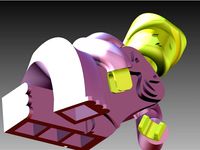
Princess :Leia Lego by thinkpool
...go
wow! nuff said.
peg your lego on a peg board. support our kickstarter... take a look.
http:\\www.ablegames.win\kickstarter.htm
thingiverse
free

Rocket Ship for Defending Ducks by thinkpool
...thingiverse
defending duck have a home now and a means to travel to other universes.
video of ship @ https://vimeo.com/128652181
thingiverse
free

Shoelace locking gadget by thinkpool
...e strings instantly.
no need to tie knots, looks very stylish.
press button to release laces. print is one solid object.
enjoy!
thingiverse
free

Apollo 11 Play set by thinkpool
...this is in dedication to the apollo missions and the usa
please read the downloadable pdf instructions for assemble instructions
thingiverse
free

Snake Mountain Door - MOTU by thinkpool
...ain door
for the original 84 snake mountain.
one print snaps into hinges and works like a charm.
included is the bottom platform.
thingiverse
free

Cat Ears using your own hair by thinkpool
...sign was inspired by fashion and halloween. this is an original design by thinkpool. enjoy fashion forever.
costumechallenge2017.
thingiverse
free

Bunny Go Go - keychain idol by thinkpool
...nny go go - keychain idol by thinkpool
thingiverse
hey bunny fans, this ones a go go. don't miss it!
adjust to desired size.
thingiverse
free

Banana Twirl Cutter by thinkpool
...nanas fun to eat by giving it a twirl
peel your banana and insert into device and just turn
out comes a banana spring
enjoy!
thingiverse
free

Rock Holder - Planet Zeurom by thinkpool
...f you have to think about it then you're a step behind.
print this, trust me
can be used to hold a dice
merry christmas 2020
Dragonfly
design_connected
$18

Dragonfly
...dragonfly
designconnected
bonaldo dragonfly armchairs computer generated 3d model. designed by karim rashid.
3d_export
$8

said dragonfly
...said dragonfly
3dexport
beautifull dragonfly
turbosquid
$23
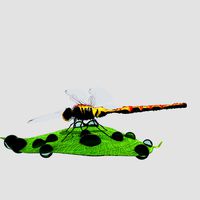
Dragonfly
...osquid
royalty free 3d model dragonfly for download as blend on turbosquid: 3d models for games, architecture, videos. (1213135)
turbosquid
$4
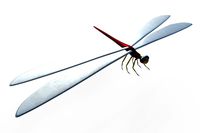
Dragonfly
...urbosquid
royalty free 3d model dragonfly for download as ma on turbosquid: 3d models for games, architecture, videos. (1394155)
turbosquid
$125

dragonfly
...lty free 3d model dragonfly for download as max, obj, and fbx on turbosquid: 3d models for games, architecture, videos. (1366313)
turbosquid
$39

Dragonfly
...alty free 3d model dragonfly for download as ma, obj, and fbx on turbosquid: 3d models for games, architecture, videos. (1243634)
turbosquid
$100

Dragonfly
... available on turbo squid, the world's leading provider of digital 3d models for visualization, films, television, and games.
turbosquid
$30

DragonFly
... available on turbo squid, the world's leading provider of digital 3d models for visualization, films, television, and games.
turbosquid
$15

dragonfly
... available on turbo squid, the world's leading provider of digital 3d models for visualization, films, television, and games.
turbosquid
$9

Dragonfly
... available on turbo squid, the world's leading provider of digital 3d models for visualization, films, television, and games.
Science
turbosquid
$30

Science Building
...d
royalty free 3d model science building for download as max on turbosquid: 3d models for games, architecture, videos. (1148857)
turbosquid
$2
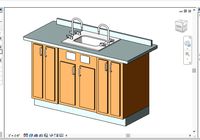
Bench Science
...quid
royalty free 3d model bench science for download as rfa on turbosquid: 3d models for games, architecture, videos. (1274551)
turbosquid
$5
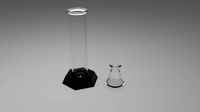
Science Flasks
...ty free 3d model science flasks for download as blend and obj on turbosquid: 3d models for games, architecture, videos. (1639964)
turbosquid
$95

Megalopolis the science
...del megalopolis the science for download as max, obj, and fbx on turbosquid: 3d models for games, architecture, videos. (1189886)
turbosquid
$8

Science Stool
...3d model science stool for download as obj, dae, fbx, and stl on turbosquid: 3d models for games, architecture, videos. (1608945)
turbosquid
$25

Science Equipment
... available on turbo squid, the world's leading provider of digital 3d models for visualization, films, television, and games.
turbosquid
$20

science desk_1
... available on turbo squid, the world's leading provider of digital 3d models for visualization, films, television, and games.
turbosquid
free

Science Equipment
...ce equipment for download as max, 3ds, dae, dxf, fbx, and obj on turbosquid: 3d models for games, architecture, videos. (1690832)
turbosquid
free

Museum of Science
... available on turbo squid, the world's leading provider of digital 3d models for visualization, films, television, and games.
turbosquid
$56

Gun science fiction
...yalty free 3d model gun science fiction for download as blend on turbosquid: 3d models for games, architecture, videos. (1388382)
